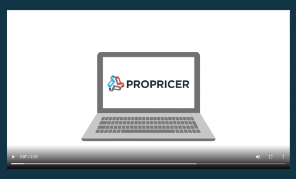What exactly is a bid protest?
It’s a challenge—by a contractor—to a contract award for the procurement of goods and services. Or it can be a voiced disagreement with the terms of a solicitation for a contract (in other words, the contents of your RFP). (1)What kinds of issues do Contractors typically dispute?
Any number of things, including, but not limited to: defective pricing judgments, a lack of cost realism in Statements of Work (SOWs) and fatal assumptions—or contractor misunderstandings that surface in proposals as a result of ambiguous content in your RFPs.(3) of assumptions you receive from bidders, making it quick and easy for owners to
A bid protest is usually triggered when one of these events occurs and all informal attempts to resolve the issue haven’t worked out. (1)
So how do you eliminate bid protests altogether? That may not be entirely possible, but the following tips can help significantly cut the number down:
Lift contractor competition. Cut contract disputes.
From a macro perspective, the best way to put a lid on bid protests is to help contractors prepare solid proposals that increase competition among their ranks, which can also boost agency social responsibility in terms of leveling the playing field when award time rolls around.
As a result, you can have fewer protests. Which uses less taxpayer money for funding dispute resolution on the agency side. Simply put, greater contractor equity results in less protest. (2)
But how does an agency specifically create this?
Conduct market research on pricing and costs.
Before you develop an RFP, be sure to research the industry marketplace that maps to your proposal. Find out what kinds of fees your target firms are charging on the open market for the products or services you’d like rendered, as well as how much they’re paying subcontractors and vendors for raw materials. These figures will give you a baseline for determining if the cost ranges in your RFP are appropriate or off in some way.
The process will not only help you reduce contract bid protests, it will also help you cement stronger relationships with the contractors you award—and even those you don’t. Fairness goes a long way in establishing your network.
Also: Construct a collaborative exchange of information between your agency’s contracting officers and contractors you’ve worked with in the past. This strategy can be instrumental during the pre-contract stage. It can help you craft RFPs that contain realistic expectations on scheduling, award frameworks, and pre-award mechanics that both new and veteran vendors will be less prone to protest.
Define exactly what you need. Clearly. Concisely.
Your RFPs must always justify the needs of the government in a way that’s both crystal-clear to contractors and adherent to the strict confidentiality requirements the government demands.
Nowhere is clarity more critical than in the SOW. Luckily, your contracting officers probably have the experience and training needed to make this automatic.
But as a reminder, a modern SOW contains:
- Scope of work. Holistic perspective on the work product, devoid of ambiguity.
- Performance objectives. Specific outcomes and metrics the work should achieve. An exact list of the products and services to be produced.
- Period of performance. Timelines for each phase of the contract: proposal, technical, pre-award, and post-award.
- Place of performance. Determines if the work can be performed at contractor or subcontractor locations, at government sites, or a hybrid arrangement.
- Hours of work. Work performed at an agency location often requires set hours. If it’s performed at a contractor’s, not so much. (2)
Expect the world. But be reasonable.
Often, your agency can gauge price and cost reasonableness for a new contract by researching historical pricing from similar contracts. Though inflation or deflation will play a part in determining your exact ranges, prior successful proposals—that likely weren’t subject to bid protests—can give you a good idea of where your contractor submissions need to be, in terms of dollars.
Be sure your proposed cost ranges have room for some semblance of contractor profit. Everyone has to make a margin. It’s why we work. (2)
Bid protest prevention tool:
ProPricer Government Edition—for federal government agencies.
Stand firm in your proposal selection. With ProPricer Government Edition compare proposals submitted from different customers to determine which one meets the requirements set forth in the RFP in the most appropriate manner. Normalizing the different price model elements, resources, and summary fields allows for apples-to-apples comparison when running the project-specific reports.
Our flagship event—Government Contract Pricing Summit — is back in-person and online, beginning June 14th-16th, and we can’t wait to see you there! Registration is open, and whether you join us in San Diego or enjoy the digital experience from the comfort of home, you’ll learn from hundreds of fellow federal contract pricing professionals across all industries over three days at our hybrid event happening at the idyllic Sheraton San Diego Hotel & Marina.
Sources




